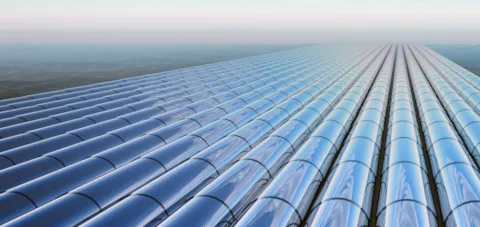New Storage Capacity: Key Element for the Energy Transition in Italy
The European goal in the Clean Energy Package of reaching 32% of renewable share on total gross energy consumption by 2030 is quite challenging for all the European countries and Italy is putting a great effort, increasing the renewable energy generation and, in parallel, the electrification of the energy consumption.
Italy has set its objectives in the energy national plan (PNIEC) pushing to a high integration of the renewable power generation (55% of renewable share in the electric sector by 2030).
In the generation mix, an increment of renewable installed capacity by 2030 of around 40 GW with respect to today is expected, mainly consisting of wind and photovoltaic plants, in parallel with the shutdown of 9 coal power plants by 2025, for a total capacity of around 7,2 GW.
Challenges on the electricity network
The world’s energy system is changing profoundly, bringing opportunities and risks. The transition from fossil-based to zero-carbon is happening fast but not quickly enough to meet the Paris Agreement’s objectives to limit global warming to ‘well below 2°C’, let alone 1.5°C. DNV’s Energy Transition Outlook (ETO) confirms that available technologies and systems have the potential to close the ‘emissions gap’.
One of the main points of discussion during the Energy Transition is the stability of the transmission network in terms of frequency and voltage.
In fact, larger fluctuation between supply and demand in the electricity market have been observed and DNV, during the past years, has worked hard together with companies and researchers to find the best solution, both, from a technical and economic point of view.
The energy storage technologies have been highlighted as a fundamental technology for the resilience of our grids and for the continuity of electricity supply.
While the price for battery applications is decreasing, many countries have already started testing energy storage applications, both, as stand-alone and combined with renewable plants (mainly solar or wind).
DNV energy storage experts are working with manufacturers, utilities, project developers, communities and regulators to identify, evaluate, test and certify systems that will integrate seamlessly with today’s grid, while planning for tomorrow.
A perfect solution for stability
The storage systems are fundamental for the energy transition, both from an energy efficiency point of view and from a security point of view, since they can provide:
- Power-Intensive services: short discharging cycles (seconds, minutes) that can ensure security and inertia to the power system, contributing to rapid frequency regulation (Fast Frequency Reserve).
- Energy-Intensive services: long discharging cycles (hours) leading to load shifting (supporting the high residual load) and reduction of grid congestions.
Both applications result important: the first one to cope with the progressive loss of inertia in the system, the second one to manage the increasing fluctuations as a function of weather conditions.
Regarding the energy-intensive services, their contribution to the electrical system will become more and more important with the increasing renewable capacity, that, in some hours during certain days, already exceeds the actual electricity demand. In fact, lacking the presence of storage systems, the TSO is and will be forced to curtail big quantities of clean and cheap wind and solar energy.
| Storage system | General characteristic | Services |
| Pumped-hydro storage systems (PHSS) | Energy intensive |
|
| Battery energy storage systems (BESS) | Power intensive |
|
An example of interest in the market can be seen in the recent tender of Terna, the Italian TSO. Terna has invested in a new pilot project for an ancillary service (230MW of total capacity), called Fast Frequency Reserve, that can reply to the grid frequency drops in few seconds, counterbalancing the reduced inertia in the network.
Conclusion
We need extraordinary policy action: policies that advance renewables, new decarbonization technologies and systems, EVs and energy efficiency. Beyond this, we need to change the prevailing mindset from ‘business-as-usual’ to ‘business-as-unusual’. Only by challenging how businesses and societies operate and behave we can start closing the emissions gap between where we are headed on global warming and where society has agreed upon.
PNIEC expects, by 2030, the installation of new storage capacity of at least 6 GW (from PHSS and BESS with an adequate amount of energy capacity). In fact, during the coming 10 years there is the necessity in Italy to increase the storage capacity in the Centre, South and islands, where there will be a higher renewable energy penetration as wind and solar resources are most favorable. Such higher renewable generation can be managed only through a rational installation of storage systems, ensuring efficiency and security of the electrical system.
DNV, through its dedicated labs and expertise around the world, has created an industry-leading combination of analytical and testing experience that gives a unique advantage in finding energy storage solutions, providing support across the entire energy storage value chain—feasibility, testing, development and engineering, construction and operation.
10/2/2020 9:00:00 AM
